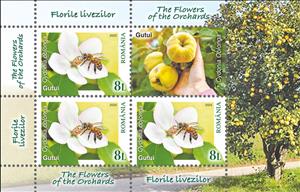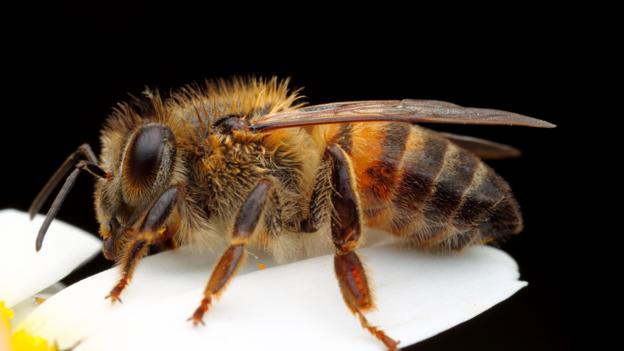Mini Sheet: Quince (Cydonia oblonga) (Romania 2025)
Quince (Cydonia oblonga) (Romania 2025)
13 May (Romania ) within release Flowers of Orchard Trees (2025) goes into circulation Mini Sheet Quince (Cydonia oblonga) face value 3*8 Romanian leu
| Mini Sheet Quince (Cydonia oblonga) in catalogues | |
|---|---|
| Colnect codes: | Col: RO 2025.05.13-03a |
Mini Sheet is horizontal format.
Also in the issue Flowers of Orchard Trees (2025):
- Stamp - Apple (Malus domestica) face value 5.50;
- Mini Sheet - Apple (Malus domestica) face value 3*5.50;
- Stamp - Cherry (Prunus cerasifera) face value 14;
- Mini Sheet - Cherry (Prunus cerasifera) face value 3*14;
- Stamp - Pear (Pyrus communis) face value 7;
- Mini Sheet - Pear (Pyrus communis) face value 3*7;
- Stamp - Quince (Cydonia oblonga) face value 8;
- Mini Sheet - Quince (Cydonia oblonga) face value 3*8;
Mini Sheet Quince (Cydonia oblonga) it reflects the thematic directions:
Bees are winged insects closely related to wasps and ants, known for their roles in pollination and, in the case of the best-known bee species, the western honey bee, for producing honey. Bees are a monophyletic lineage within the superfamily Apoidea. They are currently considered a clade, called Anthophila. There are over 20,000 known species of bees in seven recognized biological families. Some species – including honey bees, bumblebees, and stingless bees – live socially in colonies while most species (>90%) – including mason bees, carpenter bees, leafcutter bees, and sweat bees – are solitary.
A flower, sometimes known as a bloom or blossom, is the reproductive structure found in plants that are floral (plants of the division Magnoliophyta, also called angiosperms). The biological function of a flower is to effect reproduction, usually by providing a mechanism for the union of sperm with eggs. Flowers may facilitate outcrossing (fusion of sperm and eggs from different individuals in a population) or allow selfing (fusion of sperm and egg from the same flower). Some flowers produce diaspores without fertilization (parthenocarpy). Flowers contain sporangia and are the site where gametophytes develop. Many flowers have evolved to be attractive to animals, so as to cause them to be vectors for the transfer of pollen. After fertilization, the ovary of the flower develops into fruit containing seeds. In addition to facilitating the reproduction of flowering plants, flowers have long been admired and used by humans to beautify their environment, and also as objects of romance, ritual, religion, medicine and as a source of food.
Flora is the plant life occurring in a particular region or time, generally the naturally occurring or indigenous—native plant life. The corresponding term for animal life is fauna. Flora, fauna and other forms of life such as fungi are collectively referred to as biota. Sometimes bacteria and fungi are also referred to as flora, as in the terms gut flora or skin flora.



